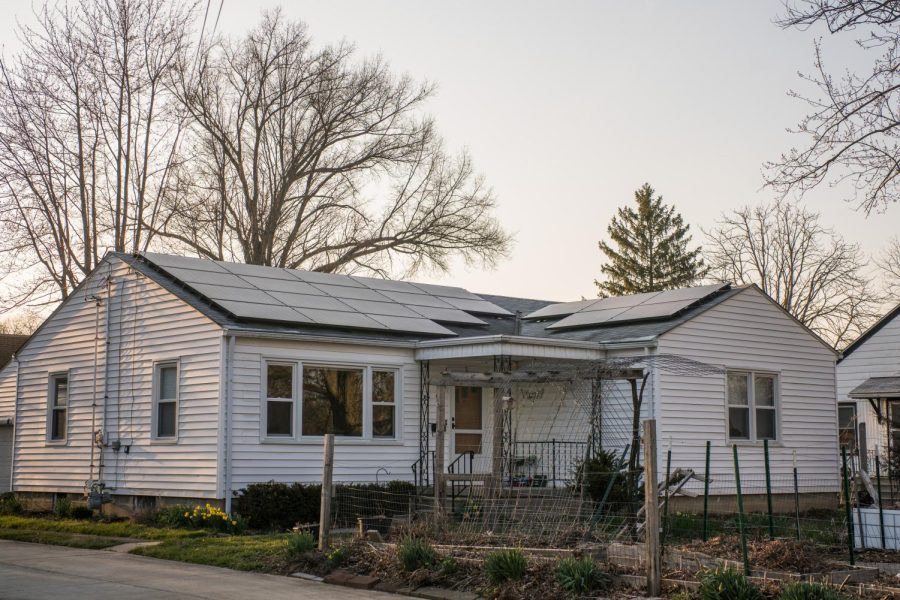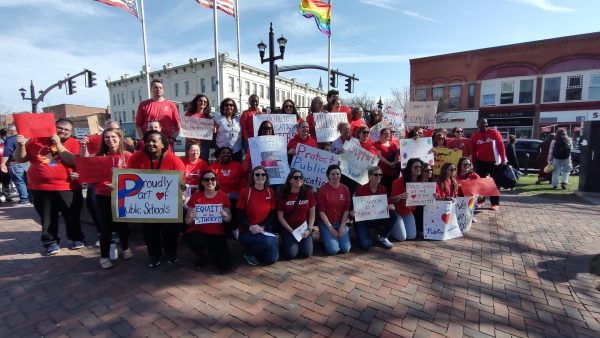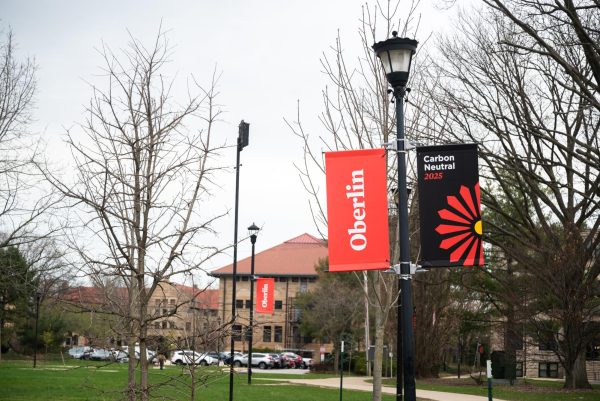City Council Discusses Carbon Emissions, Reduction Goals
Some City residents have installed solar panels to address personal environmental concerns.
On March 20, the Oberlin City Council met and discussed emissions within the Oberlin community. Linda Arbogast, the sustainability coordinator for the City of Oberlin’s Office of Sustainability, presented an in-depth overview of the City’s emissions, reduction goals, and ways to reduce the total emissions as the years progress.
Before her time at Oberlin, Arbogast worked abroad, where she focused on development in Southeast Asia. Arbogast then began working in Oberlin at Oberlin College’s Bonner Center and later transitioned to becoming the director of Oberlin Community Services. After her time as the OCS director, she worked abroad as the country director for the Peace Corps in Guyana, a country that was primarily undeveloped rainforest until it emerged as an oil powerhouse.
“I worked in where I felt the critical needs were,” Arbogast said.
This mission brought her to eventually working as the Oberlin sustainability coordinator.
As a part of their Winter Term project, College fourth-year Eli Butler interned with Arbogast to help create this presentation given to the Council. Butler grew up in a very sustainable and environmentally-friendly household, which led to their interest in reducing emissions. Butler worked as an intern with Arbogast for Winter Term. “
The environment matters just as much as any other human being,” Butler said.
Emissions within the city have decreased by 60 percent since 2007, 50 percent since 2012, and 22 percent from 2018 to 2021. This change in emissions has resulted from the increased implementation of electrification and the decreased use of fuels with both coal and oil emissions. Oberlin College plays a large role in reducing emissions for the community, including stopping using coal in 2014.
The presentation also shared the City’s emissions reductions goals. Based on the 2019 climate action plan, the city has set three benchmarks for this reduction. During 2015 the city aimed to be 50 percent below the 2012 emission level. The city produced 53 percent of the emissions from 2015. In 2030, the town aims to be at 75 percent below the 2012 emissions. Finally in 2050, the goal is to be 100 percent carbon neutral. In comparison, Oberlin College has the goal to be carbon neutral by 2025.
During the time between the years of 2015 and 2018, there was a spike in emissions, which Arbogast attributed to how natural gas was measured by Columbia Gas of Ohio – outside of the control of Oberlin residents or city government.
To help aid reduction, many emissions reduction policies and ideas have been put in place. These policies impact electricity emissions and transportation emissions in both residential and commercial sectors of the city of Oberlin. 51 percent of Oberlin’s electric grid is sourced from landfill gas. Wind, solar, hydropower, and market power make up the remaining fuel, which is comprised of coal, renewables, natural gas, and nuclear power.
“The simple answer is to electrify,” Arbogast said.
Efficiency Smart, a policy which provides rebates for efficient appliances and home energy assessments reduced commercial emissions by over 100,000 pounds of CO2 equivalents in Oberlin in 2022. In 2021, the Oberlin community’s emissions were measured at 58,729 metric tons, but increasing efficiency could lower this number.
The city is currently working on electrifying their fleet and converting municipal building lighting to LED. Kendal at Oberlin, which is a northeast Ohio life plan community, is working with the town to also become more efficient. This community accounts for 1.8 percent of natural gas and 4.7 percent of electric use, but is trying to become efficient by using solar, LED, and EV chargers. The city is also working with the company POWER to weatherize homes.
Another way to reduce these emissions is through Renewable Energy Credits. Oberlin purchases RECs for the 14 percent of the electric grid that is fueled by market sources.
“RECs are where you are spending money to produce renewable energy somewhere else so your output is renewable,” Butler said. “Buying RECs is a great band-aid solution while we are waiting for the marketable grid to catch up to renewable energy.”
They also explained the importance of offsetting emissions instead of purely eliminating them.
“The goal is not to eliminate emissions, it is to be at net zero,” Butler said.
Oberlin College’s goal to reach carbon neutrality will also heavily aid the city in reaching their own goals. In 2021, the College accounted for 26.71 percent of the City’s electricity use and 23.88 percent of natural gas use. The college is currently electrifying their vehicles, adding geothermal heating systems, and installing EV charging ports in college areas.
Transportation is the second largest sector contributing to emissions in Oberlin. Public transportation can reduce emissions by reducing the number of cars on the road. Arbogast highlighted three ways that residents can engage with public transportation in Oberlin – the Oberlin Connector, which provides low cost transportation for individuals, the GOhio ride planning tool, which allows individuals to plan their commute to incorporate carpooling and public transit, and the EV Car Share program, which allows residents and students to rent electric vehicles. During the last few years, over 5,796 bike lanes have been added throughout town and 3.4 miles of multi use trails have been repaired. Bike lanes can eliminate one ton of CO2 emissions every year for every $200 spent on them.
“We have invested a lot of money into bike lanes, and now Oberlin is a very pedestrian friendly city,” Butler said. Arbogast provided some additional areas in transportation that the city can improve on.
“We the city are building charging stations and looking into the community to see where it makes the most sense. And then we need to bring the residents on board and educate them,” Arbogast said.
The EV Car Share allows students and residents to rent electric cars for $8 an hour.
“One cool fact of data about the car share program is that of the top five users, the people who use it the most … four of them are low income people of color,” Arbogast said. “That says to me that it is being used by the people who need it.”
Throughout the entire presentation, both Butler and Arbogast demonstrated how the small changes in reducing emissions are what will allow for the community to reach this goal. When one person aids in conservation, they can influence others to do the same.
“Little or big changes completely transform a City’s emissions rating,” Butler said. “We are half of what we used to be in 2012, and some of these were from one time changes like coal.”
Next, Arbogast and City Council President Bryan Burgess will be attending a conference led by the International Council for Local Environmental Initiatives, where they will share what they learned and will answer future sustainability related questions.







